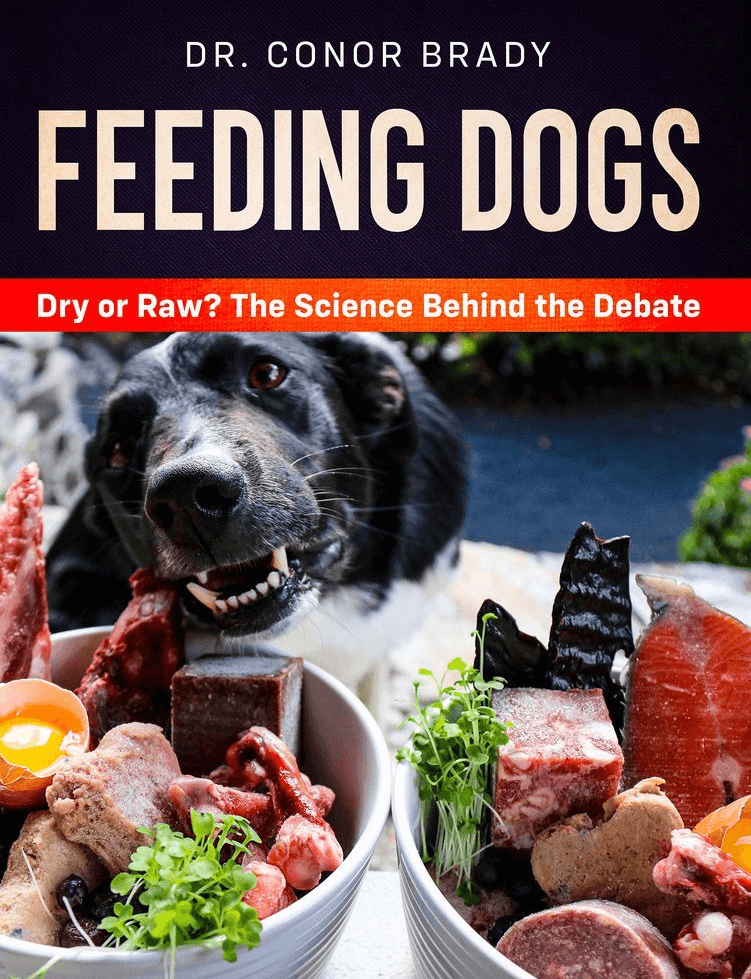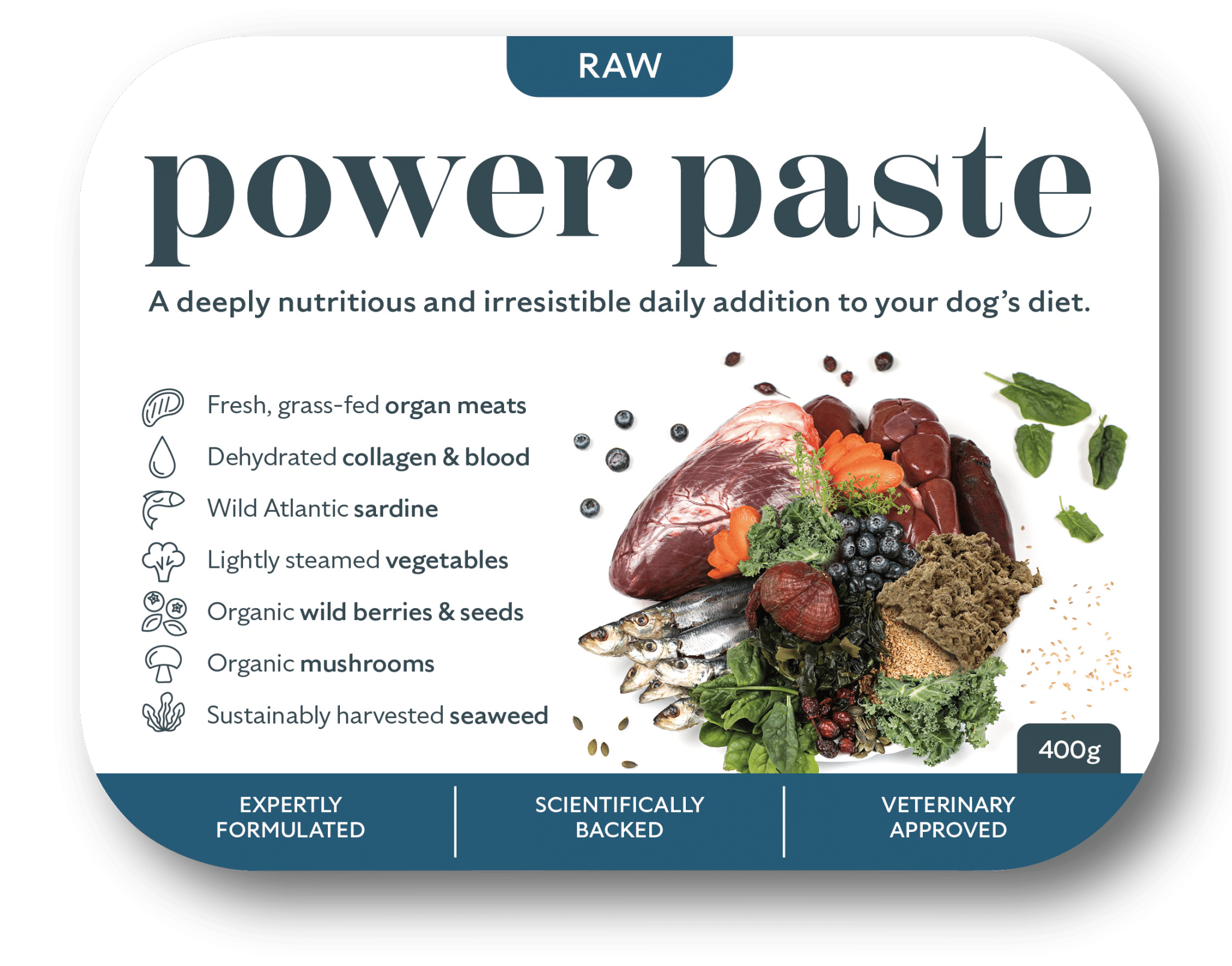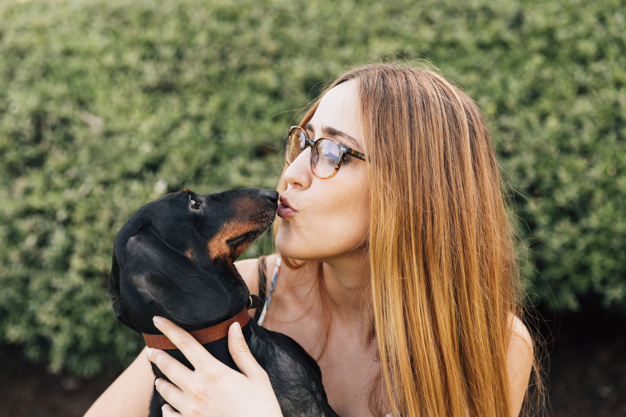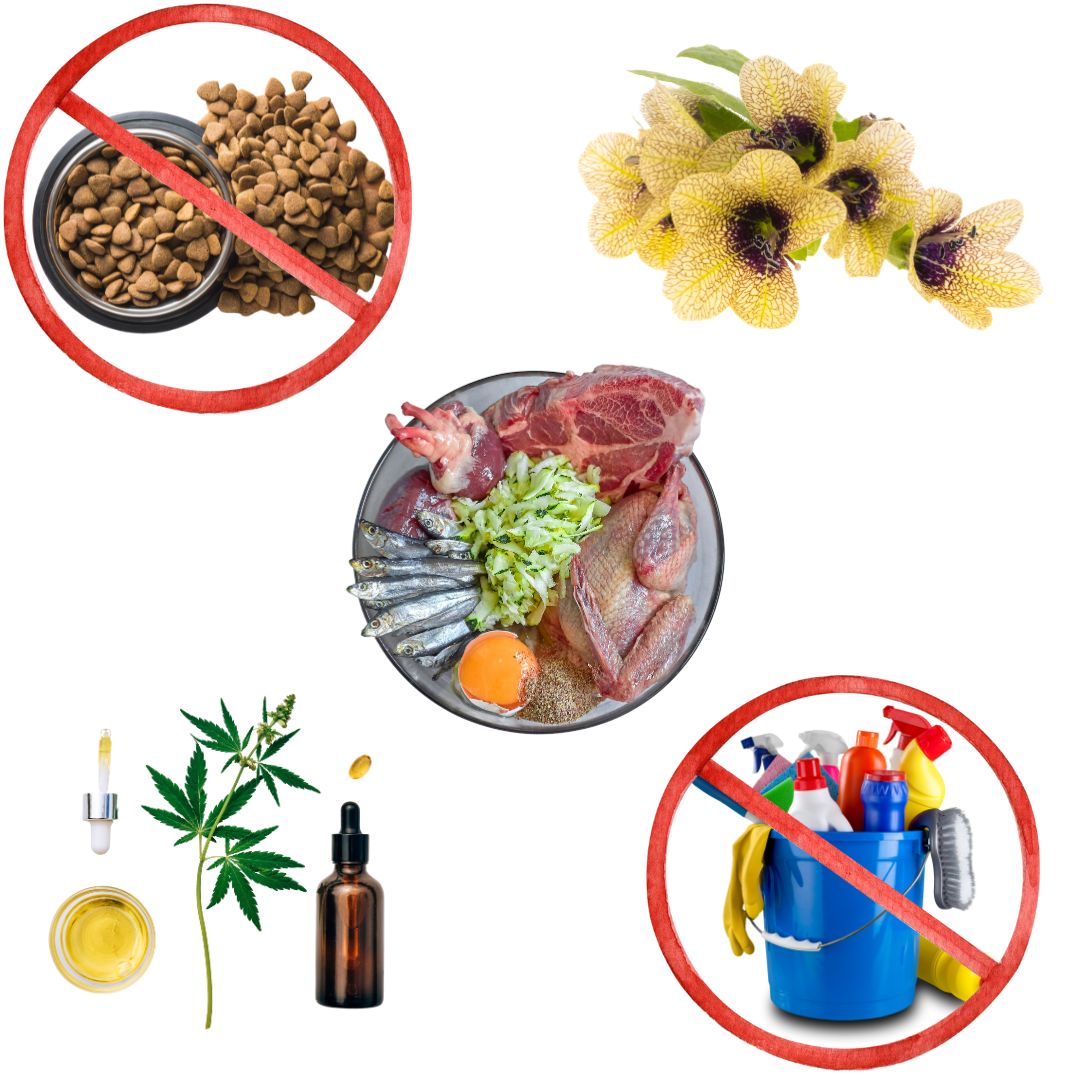Feed A Pregnant Dog Much The Same As Any Other Adult Dog, That Is 5:1:1:1, with Just With A Few Tweaks Along The Way…
The best dog diet is built very roughly around the ratio 5:1:1:1, that is 5 parts raw meat, 1 part raw bone, 1 part fresh organ (liver, kidney, heart) and 1 part vegetable matter (the jury is out on whether your dog needs plant options but here’s why I think it’s important to feed some plant additions to dogs?). However, this isn’t the article to convince you of this fact. For that, please go to our popular article everything about raw dog food in 10mins. This article is about the best diet advice for feeding a pregnant dog and right away I can tell you the ideal meal doesn’t change much from the diet previously mentioned.
We now know fresh, species-appropriate raw dog food is better for them than dry, ultra-processed kibble and yet, when faced with what to feed a pregnant dog, we can get a little nervous. All those little lives depending on us getting in right! But, rest assured, the tips below will show you that very little changes formulaically for a pregnant dog.
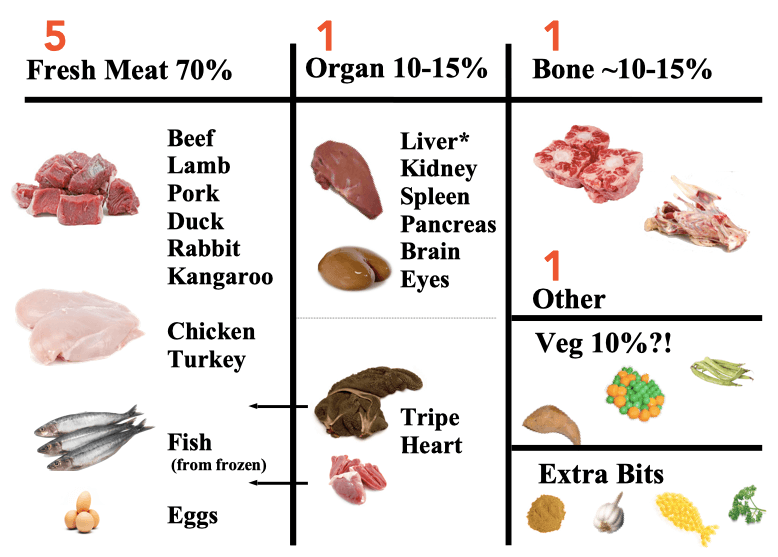
1/5. Building little carnivores is easy..
Building little carnivores is easy. Bar a few minor tweaks here and there, when raw feeding a pregnant bitch you will simply be ramping up what you normally offer her as time goes on. Know why? Because a well-balanced raw meal has everything Mum needs to build mini copies of herself. She will soon need more meat muscle to build their muscles. She will need more cartilage and bone to fuel the construction of their little joints and frames. She will need more organ meats to fuel the construction of their various organs. She will need a touch more fat for the energy to do it all. While the industry will use its favourite tool of fear to try draw you back into the kibble realm, I assure you it’s about as complicated as that.
Don’t put yourself under any undue pressure. Think about a pregnant human female – what special diet advice does she receive? Little to none. For the most part, she follows her nose, her cravings…and we do OK.
2/5. Why Variety is so important for the Pregnant dog
Each meat offers a different amino acid profile, each organ a variety of nutrient and bioactive compounds. Ingredients differ on where they were grown, what they were fed upon, season etc. Trust no single product or recipe to provide everything she needs, particularly as during pregnancy her nutrient needs fluctuate on a nearly daily basis. There is no other way to accommodate for all this except by offering her a variety of good quality ingredients. This levels out any nutritional discrepancies in the diet offered (be it dry or raw). It is about balance over time, as it is in us.
But variety serves another purpose. Studies show animals start building their taste preferences whilst in the womb. You can spray apple in the air of pregnant rats and they come out fighting for the apple-coated nipples. Studies by Kuo in 1976 show dogs reared on limited taste experience eat only those foods when older. Feed them meat they will eat only meat but feed them only veg they will eat veg (explaining why do many veggies exclaim “my dog LOOOVES veg”! It’s a complicated one). Either way, you want your dog to eat whatever is put in front of him so mix it up when young and that starts with pregnant Mum.
So, change your raw dog recipes or pre-made raws regularly, weekly if you can. Don’t stress too much after that.
Each of the organs are important so make sure to vary them up too – liver, heart, kidney, sure, all very important, but what about eyes and brain?! The easy solution for the latter is to feed the occasional raw dog food made on fish heads (which is any that say they contain fish – they don’t use fillets).
3/5. Feed the best Meat you can
This doesn’t take much explaining. Good food builds good pups. This means feeding the pregnant dog a fresh, species-appropriate raw dog food, made on the very best meats you can find. This means organic meat and bone. Those animals will hopefully have had a better life and death and have been fed the most natural diet with little to no chemicals used on them.
If you want to go with another brand, here’s how to pick a good pre-made raw dog food and avoid the pitfalls.
4/5. Do NOT need cereal-based pet food…
For reasons best known to themselves, the Amercian Kennel Club put out DIRE nutritional information. Check out this statement:
“High amounts of soluble carbohydrates and a low fiber content are important to ensure adequate energy intake and to avoid hypoglycemia (low blood sugar) in late pregnancy…Supplementation with meat products can reduce the carbohydrate content of the diet and can be associated with hypoglycemia and stillbirths””
…in an animal with ZERO PHYSIOLOGICALLY NEED OF CARBOHYDRATES (even during pregnancy). We know (and they know) dogs make their own blood sugar from protein and fat, hence the AKC do not use a single reference in support of their crucial point.
Or this by the VCA, one of the largest groups of vets in the world (recently bought out by Mars):
Raw diets should be avoided in breeding dogs, due to the risk of infections that may contribute to infertility.
No reference used. I do have a reference here though where the authors conclude the chemicals in dry pet food are resulting in a decrease in the fertility of male dogs (couldn’t find a warning reference to such work on the VCA site!). In fact, here’s a great write up on the scary amount of hormone-mimicking chemicals that can make it into dry pet food.
Contrary to the ATROCIOUS, completely unsupported NONSENSE spewing out of such groups, I strongly advise not feeding your pregnant dog carb-based, ultra-processed garbage in favour of a fresh, species-appropriate and thus very low carb diet.
5/5. How do feed a pregnant dog at the various stages of pregnancy
For the first half of the pregnancy nothing much will change and she will eat as normal. Many breeders like to use a touch more heart muscle which can be higher in folic acid but I suspect this is a human concern pushed on dogs. It’s no harm anyway
Turbo-charge your recipes, pre-made or DIY with these extras:
- A raw egg
- Some seaweed for harder to find vitamins and minerals
- Some mussels from frozen for manganese
- Some fish oil (with NO ADDED vitamin A)
- A handful of blueberries here and there (antioxidants)
WEEK 5: Start to Increase Quantity
She’s going to start getting hungrier now. Over the next three weeks, you will increase the amount of food she is being given by approx 20-30%. The general rule is:
- By week 6: food will have increased by 5–10%
- By week 7: increase by another 5–10%
- By week 8: increase by another 5–10%
WEEK 6: Start to increase the number of meals and fat slightly, Reduce bone slightly…
Her stomach capacity will shrink as her pups grow. Decrease her portion sizes and increase how often she is fed; three, four, maybe even five, times a day.
You can also increase the fat content of her diet at this point. You can do this by selecting more red meats (duck, pork, beef) than white (chicken, turkey, fish). Fatty beef mince is probably the easiest ways of adding some much-needed energy (this is how raw feeders do it, not by adding carbs as the candy companies advise).
The Calcium Conundrm
We start reducing the bone content around week 6 by adding more boneless meats to her diet. There are apparently two reasons for this: the first is we don’t want her constipated but well made raw diets don’t constipate so I don’t get that.
The second is that we don’t want too much calcium in her diet at this point, a concern that grows near the end of her pregnancy.
Calcium is stored in the bones. Before birth the parathyroid pulls calcium from the bones to help form the skeletons of the new pups but also to increase the contractibility of heart and uterine walls.
The concern, it seems, is that feeding to much calcium now can play havoc with this system.
However, I feel this is a throwback to the type of calcium used in dry food and nutritional supplements (calcium carbonate). Studies of calcium consumption in humans shows the body does not treat normal, natural calcium (bound to a protein) the same as supplemented calcium. In essence, you can over-eat the supplements and have problems (as we see in dry foods containing too much calcium to phosphorus) but this issue is not apparent in raw fed dogs (dogs don’t blow out their calcium needs by eating a nice raw bone, for example).
It’s possible the calcium concern may be important during and after birth. Oxytocin controls the duration and frequency of contractions but calcium and the parathyroid controls the strength. The theory goes that if you feed too much calcium (which type?!) then the parathyroid go on vacation during labour when you actually need it to work. However, I can find no scientific reference for this. That said, I’m not a vet and I’m loathe to advise much more than this in such matters. Personally, I aim for happy medium until more is known.
All I absolutely KNOW is that you should NEVER, EVER feed calcium supplements to your pregant bitch unless under the guidance of a good vet.
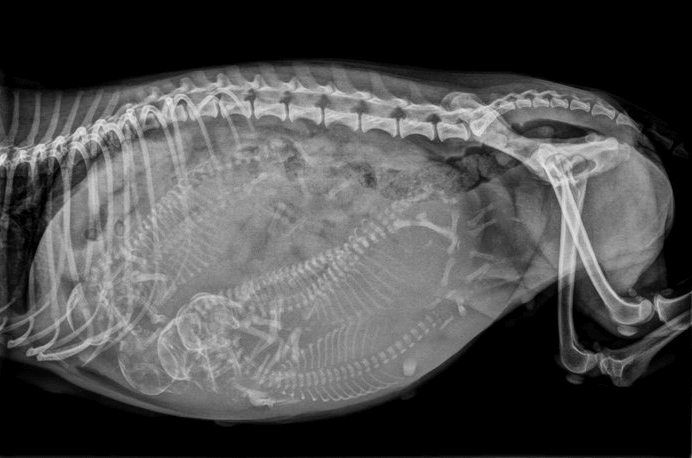
WEEK 8-9 Food quantity continues to increase
The food quantity should increase gradually over time and by week 8 she may be consuming up to 50% more food than she was pre-pregnancy.
By this stage, the bone content of her food should be low to nil.
In the last week (week 9), she will begin to eat less, so gradually reduce the amount of food.
A day or two beforehand some bitches will stop eating altogether and the same can happen afterwards. Don’t worry, you have given them lots of reserves to draw upon.
Just before birth, Dr. Ian Billinghurst, author of “Give Your Dog a Bone”, recommends to increase the amount of cooked vegetables during this time. This has a laxative effect on the dog, allowing her to fully vacate her bowels, facilitating more space for the pups and contributing towards an easier birth. This can also be achieved with a product like StoolRite which we co-developed (however, some cooked mashed sweet potato with skin on has the same effect!).
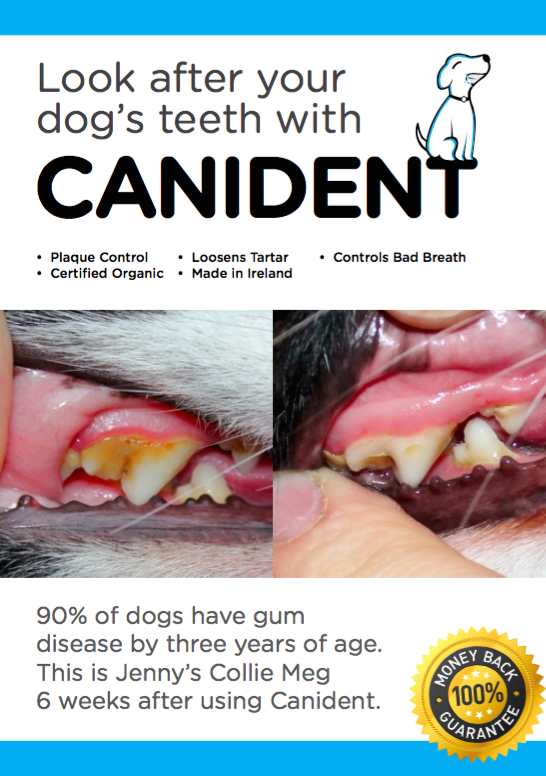

Post Birth…
Once she begins to eat again, you immediately start putting the calcium back into her diet via raw bone. She’s going to need it for all that milk. The bigger the brood the bigger the draw on her calcium reserves. A lack of calcium in the brood bitch can result in eclampsia (seizures), something you don’t want to experience.
Bonier bits like chicken backs, necks, carcass, wings are great. Or, if she’s not up to eating bones yet, a pre-made raw with 10% bone in it. And don’t forget to leave out lots of freshwater.
While we try to feed right for the type (small bones for small dogs, bigger bones for bigger dogs) it’s a good time to leave a nice few bits of beef bone about the place. Pups can explore them, Mum can eat them if needs be (remember the cravings pregnant mothers gets? The body knows and will tell you).
Eating the Placentas
This is perfectly normal, though if there are any complications and some placentas appear off, maybe take these away so they can not be eaten. The placentas, along with a few other things such as the stress hormone cortisol, can have a laxative effect. Again, totally normal.
Home Made Booster for Lactating Mothers
Dr. Ian Billanhurst recommends a great blended mix for the mother, after the first few days of the birth of her pups:
- 1 cup of whole milk (goats milk)
- 1 teaspoon of real raw honey,
- 1 or 2 teaspoons of fish oil (not cod liver oil)
- 1 raw egg
- 2g of Canident nutritional booster
To this, I would add
- some ground liver
- some fenugreek and milk thistle, both known to stimulate milk production during lactation
 Power up your dogs bowl with Power Paste
Power up your dogs bowl with Power Paste
Things to Exclude From the Lactating Bitch…
Please avoid all unnecessary chemicals at this time folks. That includes all the chemical flea and worm treatments. Worms are a NATURAL part of the process. There are natural ways to deal with them covered in the article but please get the advice of a good (natural) vet first.
Now, check out how to wean puppers…!!!
***
I have spent a lot of time building up my knowledge. From a doctorate in animal behaviour and nutrition to years in guide dogs and the last seven year inside and out of the pet food industry, I have always provided all my information free to the public, articles that I spend a lot of time putting together. While it’s clearly a passion of mine the fact remains, I can’t do this and a steady job at the same time. Without a salary or fancy sponsorship, I am left trying to monetise my site as much as I can without pushing on you horrible adverts for car loans and crap pet products. One way I do this is by tracking some of the links to products I recommend. Another is by popping a few ads for my products in some of my bigger articles. Finally, I’m now putting a donation button at the bottom of my longer articles. So, if this helped you in any way and you feel you’d like to give me the price of a cup of coffee, please free to do exactly that. If you’re strapped and can’t afford it, I can totally sympathise, you’re free to read on, no questions asked. We’re glad to have you on board spreading the word regardless.
Many thanks and continued good health to you and your pets.





